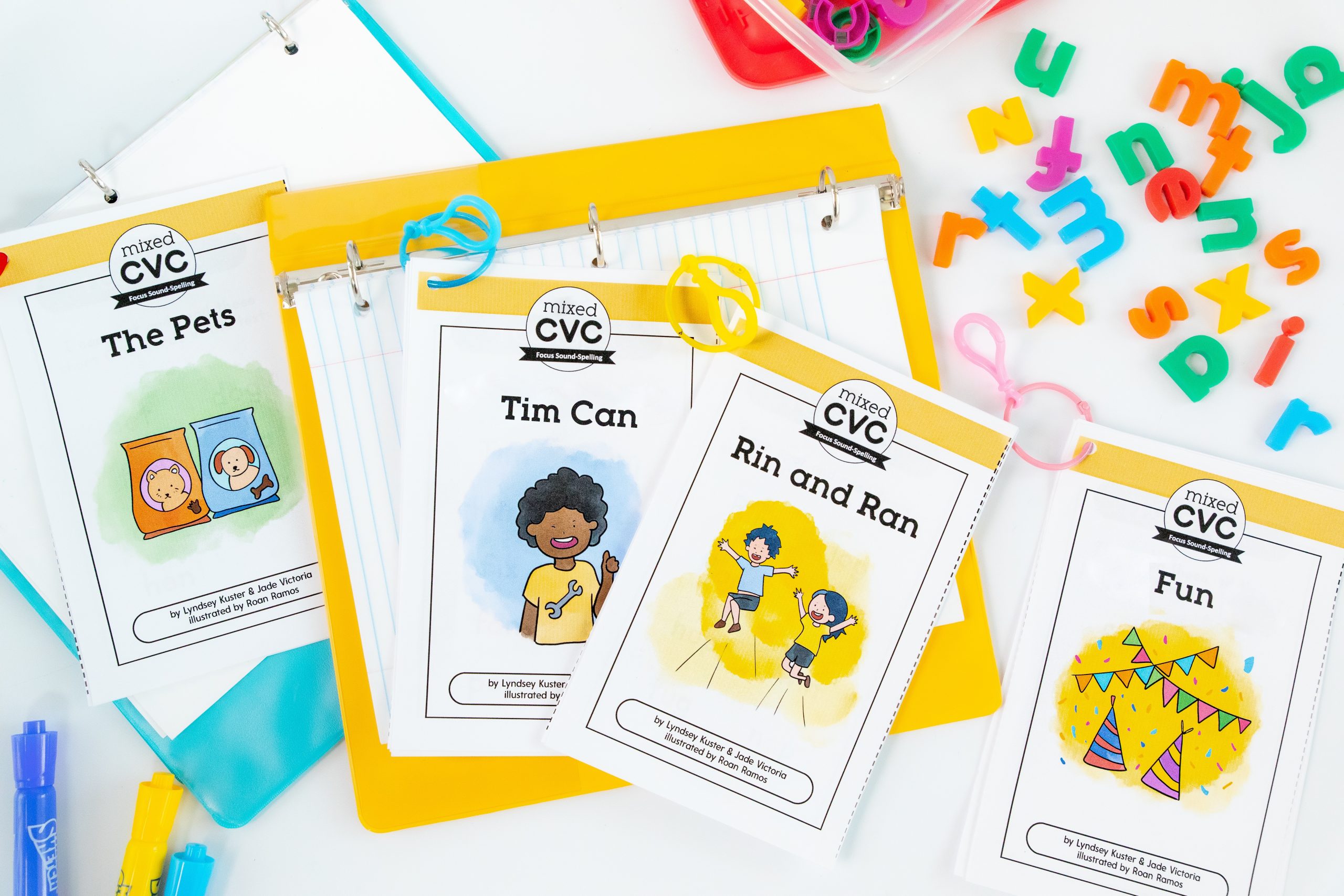Thinking about whether you should be using decodable readers during your small group instruction time in your K-2 classroom? In this post, I’ll be breaking down what decodable readers are, how to use them in your classroom, and a few handy resources that may be helpful to you (including a decodable reader freebie!).

What are decodable readers?
A decodable reader is a highly controlled text that is made up of the following three components:
- Words that contain the focus sound-spelling students are currently practicing and sound-spellings that have previously been taught.
- Some high-frequency words that are irregular or contain unknown sound-spellings. You can read all about how to teach high-frequency words with a phonics-based approach here.
- Very, very few (or none at all) story words. A story word is a word that adds to the quality of the text but comes later on in the scope and sequence and has not been explicitly taught yet.
For example, let’s take a look at the decodable passage below. This is the short o decodable reader from our Foldable Decodables Mini-Books resource.

As you can see, this mini-book includes mostly short o words and high-frequency words.
The short o words included in this decodable text are:
- Pop
- lost
- hog
- Bob
- fog
- log
- box
- bog

Why are decodable readers important?
Research shows it is imperative that we devote more than 50% of our phonics lesson to application exercises. Decodable texts are so important because they allow students to apply the phonics skills they have learned to authentic reading experiences (unlike many skill and drill exercises where students are practicing phonics skills in isolation).
Decodable texts lay a base foundation for early readers to continue to build off of for the rest of their lives. They provide your students with consistent application. The Foldable Decodable Mini-Books resource does just that! This resource is a jackpot for any teacher. Each sound comes on its own piece of paper which can be folded by you, parent volunteers, or even your students.

How to Use the Foldable Decodables
The cover of each reader in this resource shows the focus phonics skill and pictures that have that sound. Students can color and decorate the cover. Next, you will notice a list of words with the same phonics rule accompanied by sentences to practice those words. Finally, each reader has a short story for application. There is a place where students can illustrate the story. These interactive decodable readers are perfect for kindergarten through second grade, but can be flexible depending on your students’ needs.

What other decodable reader resources are available?

Great question! If you’re needing highly-controlled decodable readers for your small group instruction time, then be sure to check out our Road to Decode program.
Road to Decode is a subscription available for you to expand your decodable resources. In it, you will find lesson plans, a library of decodable readers, and lesson-specific activities for your students. We take special care in developing decodable materials and resources that support the Science of Reading. Every month with your subscription, you will receive six new decodable readers specifically designed for developing readers. We also include lesson plans and activities to accompany those readers as well as visual aids you can use and/or post around the classroom.

How can I use decodable readers in my classroom?
There are many ways to use decodable readers in the classroom. You know the needs of your students and how you may want to incorporate them into the classroom. Or maybe you aren’t sure where to start. I do have a couple of ideas for you there.
- Use decodable readers during small group instruction time after explicit phonics instruction.
- Send decodable readers home with students to work with guardians and practice reading at home.
- Use the Mini Foldable Decodable books at centers or in small group groups.
- Explore our program, Road to Decode, and all the goodies we send you monthly for your students in the form of readers, lesson plans, activities, and visual aids.

Conclusion
In conclusion, students need access to explicit phonics instruction that follows a carefully planned scope and sequence and ample time for application so that the learning sticks. Decodable texts do just that!
If you already have a program but you need additional texts or maybe you are learning more about the benefits of decodable readers, be sure to check the Foldable Decodable Mini-Books resource and our Road to Decode subscription.
As always, I am here to support you in any way I can! Please reach out to me in the comments below or via email with any questions you have. I will respond back ASAP.
References
Blevins, W. (2021). Choosing and using decodable texts: Practical tips and strategies for enhancing phonics instruction. Scholastic, Inc.
Blevins, W. (2016). A fresh look at phonics: Common causes of failure and 7 ingredients for Success. Corwin.



Patty
April 1, 2022i love using Decodable books in my room.